JUNE: All is abloom and afoot
FRONTENAC STATE PARK ASSOCIATION NEWSLETTER
Vol. 1, No. 3, June 2023
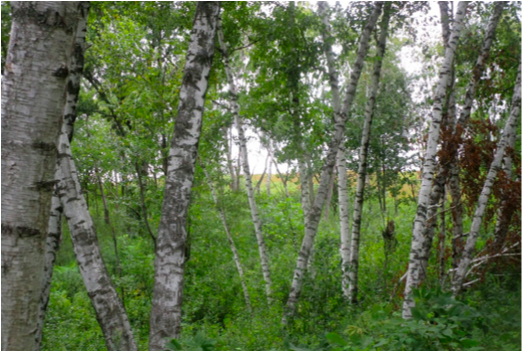
JUNE: ALL IS ABLOOM AND AFOOT
All winter, we longed for this — a perfect day in June. And now we have a month of them! What better spot to enjoy a bright June morning, afternoon or evening than Frontenac State Park? All is lush and green and heaven-scented. Wild things scurry about after their young and birds patrol their busy nests like Marines. There’s so much to see! Come and enjoy that June day you pined for back in February — or maybe a whole week of them.
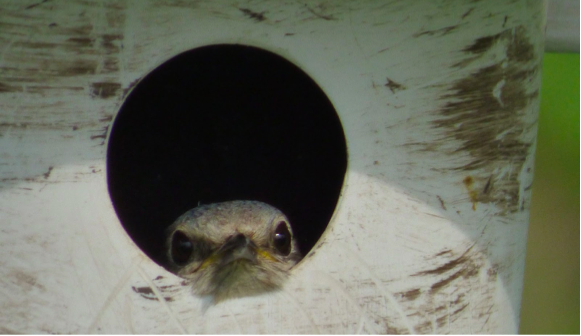
To help you decide what to explore on your visit, no matter how short or long it may be, this month’s newsletter theme is … trails.
FSPA, TOO, IS AWHIRL
Your Frontenac State Park Association has been busier than sin (with far happier outcomes). In May, we planted a variety of hardy native trees in the park campground to replace our dear departed ash trees, monitored bluebird nests, led birdwatching and other nature walks, picked up litter wherever we found it, met with the Hispanic Outreach Council of Red Wing to talk about ways we can welcome Hispanic youth to the park, heard a presentation on wild mushrooms, and brainstormed upcoming activities.

Major, messy flooding on the Sand Point trail led to postponement of a May cleanup day there, but it’s been added to our June calendar.
JUNE EVENTS
Events you’re all welcome to attend, FSPA member or not. More and latest information always online at bit.ly/fspa-events:
Saturday, June 10
Free admission day at Frontenac and other Minnesota state parks. Goings-on that day:
8 a.m. to about 11 a.m. FSPA members with a steep and engaging knowledge of ornithology will lead a bird walk around the Park’s Prairie Trail. Meet at the Park headquarters building at 8 a.m. sharp. Bring binoculars and bug spray.

9 a.m. to noon Clean up flood litter on the Sand Point Trail. If you’d like to help, pick up instructions and trash bags from us at the trailhead. Dress WAY casual, wear gloves and bring bug spray.
Noon to 2 p.m. FSPA will have a welcome table at the picnic shelter near the main parking lot. We’d be delighted to answer your questions about the park. Look for us there. And some snacks!
Saturday, June 24
FSPA members will lead a bird walk along the park’s Pine Loop trail. Meet at the park headquarters building at 8 a.m. sharp. Bring binoculars and bug spray.
Every Saturday in June

Leaving at 10 a.m. sharp on June 3, 10, 17 and 24 from the campground’s new shower building, interpretive naturalist Bruce Ause will take you on an hourlong nature walk. Bruce, director of Red Wing’s Environmental Learning Program for 30 years, has a wise, witty approach to observing and appreciating nature for adults and kids. The walk, which features many stops to observe and listen, is on a level, easy trail atop the park hill.
TRAILS TO TRY
One of the many things that makes Frontenac State Park special is the diversity of terrains it enfolds. On a single long hike, you might walk along bluffs, on prairie, and through hardwood and floodplain forests. How to choose a trail? Print out a trail map ahead of time or grab one at one of several handout sites. And consider this cheatsheet:
You don’t have much time, have small kids in strollers, are pushing or in a wheelchair, or of limited mobility: Travel the paved path that runs along the top of the bluff near the main overlook and all the way to the campground. It’ll lead you, gently, past breathtaking views and through mature maple-dominated woodlands.
You like a challenge, your knees are just fine, and your Fitbit is itching for a whole buncha stairs, because that’s how you roll: The Upper and Lower Bluffside Trails are a beautiful challenge. They feature rocky trails with many limestone or wooden stair steps leading to a view of Lake Pepin. Not recommended for little kids, unless you can stuff them into your backpack.
You prefer gentler hills, and love mixed woodland and prairie: Follow the Hiking Club Trail, marked in yellow on the park map. Everything about it is just lovely, especially the Eagle Point overlook. We recommend, however, that you use a park map to keep track of whether you’ve passed points F, G, H, I, J, K or L on the trail, because otherwise you might find yourself walking round and round and round in beautiful, familiar circles, sort of like the first time you drove in a roundabout. (Don’t ask us how we know that.)
Bonus loop: Several of the trails mentioned above link to the Pine Loop Trail, an unexpected, quiet, level loop of towering white pines planted long ago by a farmer. Rest on one of the loop’s rustic wooden benches and watch for owls sailing through the pines.
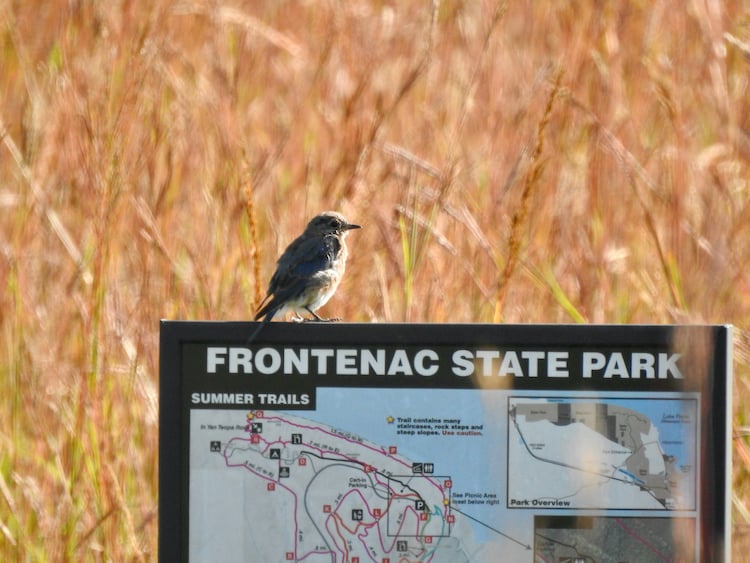
You love bluebirds, meadowlarks and prairie grasses swaying in the wind: Follow the gently rising and falling Prairie Loop trail, which starts on the south side of County Road 2 and curls over to Pleasant Valley Lakelet, which features a nifty wildlife viewing blind that kids, especially, will love. A lot of this trail is under the blazing sun, so wear sunscreen and a good hat, eh.
You want to see a floodplain forest and sandy beach, neon-colored little frogs, and the sometimes rare birds that live in both areas: The Sand Point trail begins away from the main park area. Bike or drive to the small parking area off Hwy. 61 and County Road 2 and follow the signs. It’s especially important to remember your mosquito repellent for this one (don’t ask us how we know that).
Want to see the park’s newest area?: Check your park trail map for the as-yet-unnamed trail southwest of Hill Avenue. It’s a steep loop up to a gorgeous view to the southwest and southeast of what’s historically been known as Waconia Cliffs, acquired by the park in 2020.
You prefer a trail less traveled: Frontenac State Park is a sprawling place, and the park map doesn’t show it all. If you’d like to explore some less-traveled paths, go to the park office and ask for directions to the two trailheads on the north side of Hill Avenue (or you can email pamelamarianmiller@gmail.com for maps and info). Both are moderately challenging hillside climbs that lead to high prairie paths that go northeast to the bluffs overlooking Lake Pepin. One is called the Santelman Firebreak trail, the other the Rattlesnake Bluff trail. Yes, there are some endangered timber rattlesnakes up there. No, you are not likely to be lucky enough to see one.
FUN FACT OF THE MONTH
Insects are vital to life on Earth, but we, in our human Umwelt (a German word meaning the world as it is perceived by a particular organism), appreciate some more than others. Along with butterflies, dragonflies and (real) ladybugs, fireflies, which emerge in June, delight us.
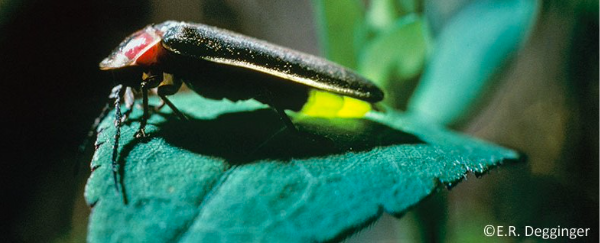
If you’re driving or walking down the park road at dusk in mid-June, you may see so many lightning bugs twinkling on each side that you could easily navigate the road with no headlights, not that we recommend that.
What’s going on there? Entomologists tell us that the flying males use their abdomen lights to attract females nestled in the vegetation below. If the female likes what she sees, she responds with her own light, and mating commences. According to the DNR, Minnesota has seven species of fireflies (family Lampyridae – get it? lamps!). Those that fly at dusk flash yellow, while those active in the dark glow green. Watching — and perhaps chasing — fireflies is a wonderful way to help children discover beauty in nature.
It remains to be seen how many fireflies will grace the park this summer. They tend to proliferate well in a damp spring, which we had – up until May.
Meanwhile, that one bug is still bugging us
Public service announcement, friends: Those $#*%@! deer ticks are still out in force, and will be for a while. Guard against Lyme disease: Use insect repellent when in the woods, and check once, twice, thrice for ticks after a hike. (And check your belly button regularly -– they like to retreat there. Don’t ask us how we know that.)
JUNE BIRD NOTE: SANDHILL CRANES
The return of Sandhill Cranes to the park each spring is an occasion for happiness. Once common in Minnesota, Sandhills were nearly wiped out by the 1940s due to habitat loss, human incursion and hunting. Now they are a protected species in the state, and fortunately, they are making a comeback. Because the park has at least one nesting pair of Sandhills, they are commonly seen and heard once they arrive in late March to mid-April.

Sandhills are big birds, up to 5 feet tall and with a wingspan nearing 7 feet. Their loud, crackling call is easy to hear and recognize. There is nothing quite like observing a group of cranes stepping along a mudflat on a misty morning. And in flight, they are truly beautiful birds.
One possible place to see them is at Pleasant Valley Lakelet. Follow the Prairie Trail to the wildlife blind overlooking the lakelet. There you might observe them nest-building or finding succulent frogs, bugs and snakes to eat. Keep an eye peeled on nearby plowed fields, where the birds can frequently be seen picking up fallen grain. Just west of Frontenac Station (New Frontenac), a pair of cranes has spent regular, harrowing hours each day along the edge of Hwy. 61, seemingly unfazed by the traffic zooming nearby.
Sandhills have been spotted on a nest this year in the park. Since they wait up to seven years before breeding, this may be the first time this pair has nested. They build ground nests of grassy materials in wetlands. The female lays two eggs, and the pair share parenting duties. Although newly hatched “colts” are precocial (meaning they are up and about right after hatching and leave the nest that first day) they stay with their parents for nine to 10 months. It is charming to see their fuzzy brown gangliness wading through the reeds next to their much taller parents. The colts will be able to fly when they’re 65 to 75 days old — just in time for their migration to Florida in early September to mid-November.
A PRETTY, EDIBLE MUSHROOM TO WATCH FOR IN JUNE
May graced us with morel mushrooms, though fewer than usual because the weather trended dry. Despite their fame, morels are just one of the edible mushrooms you may find in the park and other parts of southeastern Minnesota’s Driftless Area. One to watch for in June is chicken of the woods, a beautiful coral-like fungi that brightens stumps and downed logs.

When very fresh, neon-bright orange-and-gold Laetiporus sulphureus and pale-yellow-to-pink Laetiporus cincinnatus taste just like, uh, what IS it that chicken of the woods tastes just like?
Here’s a quick recipe if you’d like to find out: Trim the outer edges of a fresh chicken of the woods and cut it into strips. Saute it for about 15 minutes in a little butter, white wine and garlic. Add to rice, pasta, vegies, scrambled eggs or meat dishes. (Note: Although chicken of the woods doesn’t have many lookalikes, as always, make sure you know what you’re picking when you deal with wild mushrooms, and always cook them thoroughly before eating.)
OBSERVATIONS FROM THE FIELD
We're always excited to see what you are seeing in the Park. We love to see your citizen science findings on iNaturalist or tag @fspassocation on Instagram.
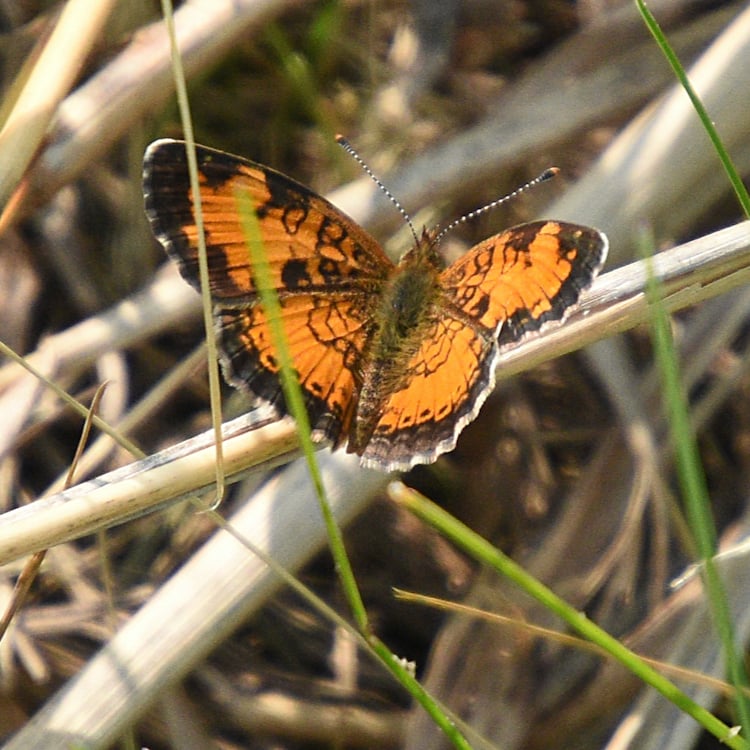
This month's observation, a Northern Crescent, is by Sandy Hokanson, who is helping us plan for our bioblitz event on August 19 and will lead the butterfly walk. Save the date!
Q&A OF THE MONTH
AMY JAY, Assistant park manager

Place of residence: Farmington
Family/pets: Husband, Eric, and I are expecting our first child in late summer. We have a husky named Zeus.
Background: Grew up in Eagan. Bachelor's degree in cell and molecular biology and biochemistry from Winona State University. Master’s degree in biological sciences, with an emphasis on park management, from the University of Minnesota-Twin Cities. My work experience includes retail management and local government, including the parks departments in the cities of Eagan and Eden Prairie, Dakota County Parks and the Three Rivers Park District.
Your role at FSP: I became assistant park manager in May 2022.
Describe your work at the park: I assist park manager Jake Gaster in overall operations at the park and the other units we manage (the Zumbro River Bottoms and Hay Creek). My focus is on the staff, daily operations and maintenance, visitor experience, volunteer coordination and event planning.
What is your favorite thing about your work? The staff is very committed to this park and the surrounding area, and that makes working here fulfilling. Also, I love working for parks. The visitors are incredible and have the desire to learn more. Folks are here because they want to be, and that in itself speaks loudly.
What is the hardest thing about your job? Having a vision for improvements but knowing the process may take some time.
What are some of your favorite park highlights? I’m a big fan of the Pine Loop area. Adding that segment on to the Hiking Club Trail or the Interpretive Loop that connects to the Lower Bluffside Trail showcases some of the diversity of the park.
If a visitor with good hiking shoes had just 2 hours in the park, what would you suggest they do? The Hiking Club Trail illustrates quite a bit of what the park is like — prairie and woods, meandering around a bluffside, some stairs but not too many, and amazing views of Lake Pepin.
What are your goals and dreams for the park? I am excited for the development of the new property’s trails and other amenities! This will be a long process, but it will be great to be a part of it.
Anything else you'd like folks to know? The Driftless Area, with its blufflands, is truly a unique place in Minnesota. I am glad to be back in the area!
THINGS WE LIKE FROM AROUND THE REGION
A tip of our trail hats to the Prairie Island Indian Community’s Honoring Dakota Project, which in recent months has invited its neighbors to buoying and thoughtful conversations and events on such topics as what our local landscape was like before European settlers arrived and dams were built, and tours of Prairie Island’s thriving Buffalo Project.
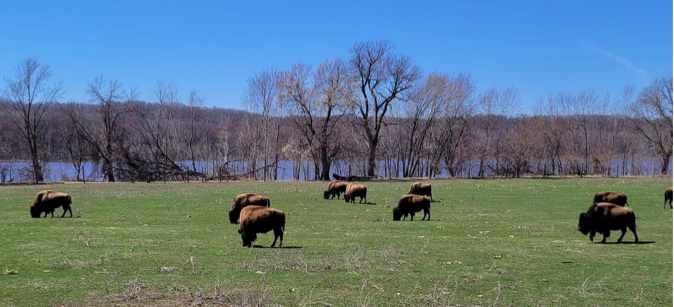
Next up — a program called “Welcome Back, Pezi Hota (green grass/sage), to He Mni Can,” a community engagement project transplanting sage from Prairie Island to He Mni Can (Barn Bluff). Want to go? Meet at the base of He Mni Can (follow E. 5th St. to the parking lot) at 5:30 p.m. on Thursday, June 8. There will be a presentation on the oral history of sage in Dakota culture and sage plants will be transplanted at the base of and on the bluff. Those who are able may hike up the trails and stairs to a transplant area. Bring your own small gardening shovels.
The best online blog about hiking in the Driftless Area that we’ve encountered is written by Minnesota Master Naturalist volunteer Marge Loch-Wouters, who lives in LaCrescent and is a frequent visitor to our park. Find it here.
POEM OF THE MONTH
In Beauty May I Walk
In beauty may I walk;
all day long may I walk;
through the returning seasons may I walk.
Beautifully will I possess again
beautifully birds,
beautifully butterflies …
On the trail marked with pollen may I walk;
with grasshoppers about my feet may I walk;
with dew around my feet may I walk.
With beauty before me may I walk;
with beauty behind me may I walk;
with beauty above me may I walk;
with beauty all around me may I walk.
In old age, wandering on a trail of beauty, lively;
in old age, wandering on a trail of beauty, living again …
It is finished in beauty.
It is finished in beauty.
Dine (Navajo) night chant, translated by Jerome K. Rothenberg

COMING NEXT MONTH
In the July newsletter, we’ll feature frogs and owls, and will be asking you to share your favorite park stories and photos with us. Watch for details then!
INTERESTED IN JOINING FSPA?

We’d love to have your support (dues are $25 per year for an individual, $30 for a couple). Here is a link. And coming for an occasional event is awesome as well. We’d love either! We aim to share our love of Frontenac State Park with as many people as possible. To sign up to regularly receive this monthly newsletter, click on “Subscribe” below, and if you have questions or comments about it, email newsletter editor Pamela Miller at pamelamarianmiller@gmail.com. Questions about the FSPA? You can reach Steve Dietz at stevedietz@duck.com.
HANDY LINKS
Frontenac State Park website Frontenac State Park Association website If you take pictures in the Park, tag us on Instagram Frontenac State Park bird checklist Frontenac State Park on iNaturalist Parks & Trails Council Website for our township, Florence Township Minnesota Master Naturalist program Red Wing Environmental Learning Center Lake City Environmental Learning Program on FB
FRONTENAC STATE PARK STAFF
Jake Gaster, park manager; Amy Jay, assistant park manager; Amy Poss, lead field worker
PHOTO CREDITS
Paper birches by Pamela Miller; Peeking Eastern Bluebird by Bruce Ause; Tree planting with Troop 27492, Girl Scouts River Valleys Council: Elsie Hawryluk, Nora Hawryluk, Pippa Johnson, Emma Dicke, Brynn Ryan, Livia DeVinny by Steve Dietz; Bruce Ause by Pamela Miller; Sand Point trail by Deane Karli; Prairie trail by Steve Dietz; Firefly, courtesy of the Minnesota DNR, copyright, E.R. Degginger; Sandhill Cranes by Steve Dietz; Chicken of the woods by Pamela Miller; Northern crescent by Sandy Hokanson; Jake and Amy by Barb Partington; Bison by Pamela Miller; Cottonwood by Pamela Miller
